
A Pair of Socks Finally Finished
Hello friends,
Back in May of 2024, my friend Karyn and I traveled down to Gore for the 45˚Fibre Festival. And while we were there, she bought me a 100 gram skein of 4 ply
Bluefaced Leicester sock yarn in the colourway Meadow Mornings (Almost) from the company Purple Sprouting, as a gift for hosting her for a week.
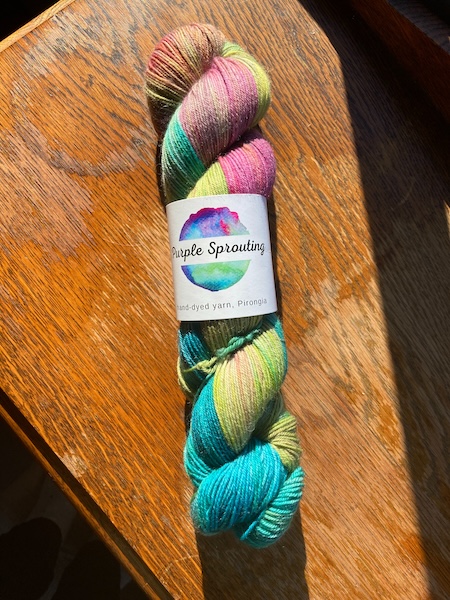
I really loved the shades of pink, teal, and lime green, so of course I turned the skein into a ball of wool straight away, with the intention to knit them into a pair of socks using my plain sock pattern I've developed over the years.
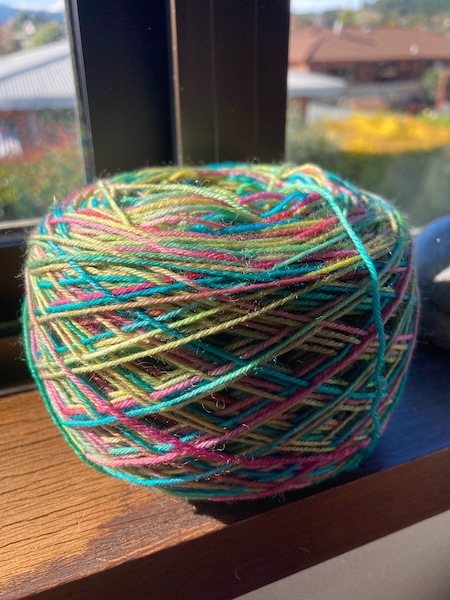
But when I started knitting the socks up, I wasn't happy with the progress I'd made. I really didn't like how they looked knitted up in this pattern...so I frogged the sock I was working on, and put it away for many months. In the meantime I knitted and finished my On the Porch blanket by Fifty Four Ten Studios, and also my Gro Hat by Fiber Tales.
After I finished those projects I pulled out my sock knitting bag and looked at the Purple Sprouting sock yarn once again. Over the coming weeks I did a whole lot of searching on the internet looking at various sock patterns to see what would fit the yarn. I eventually settled on Tin Can Knit's Rye Light sock knitting pattern, which I had already bought previously. It's a simple sock pattern that I've always wanted to try.
Once I got started the socks knitted up very quickly, and within 3 weeks I had a new pair of socks. The socks ended up being a little big for me, but they're perfect as slouchy socks for around the house. I think next time I use this knitting pattern, I'll go down a smaller size.
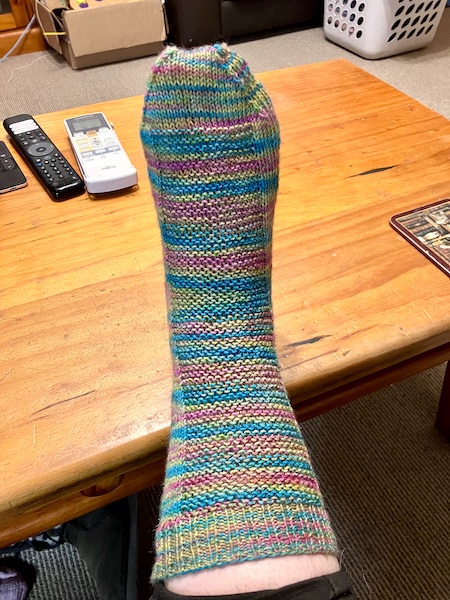
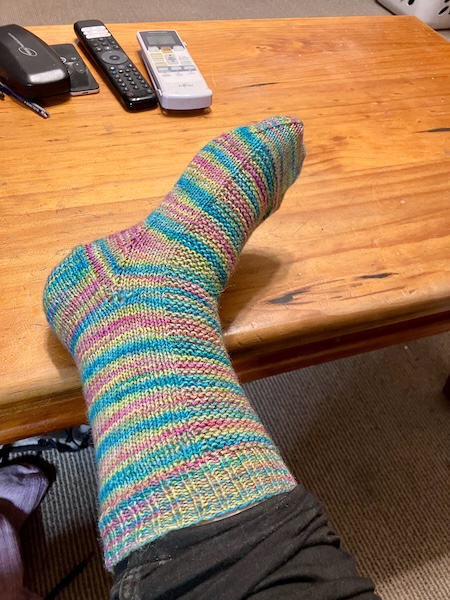
The socks are super warm, and very soft, and I really liked knitting up the Blue Faced Leicester yarn.
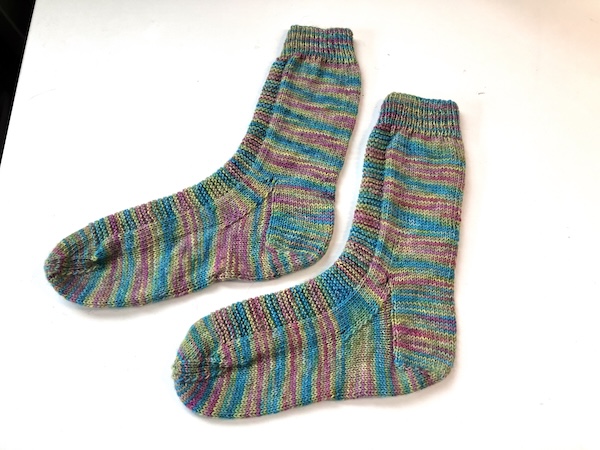

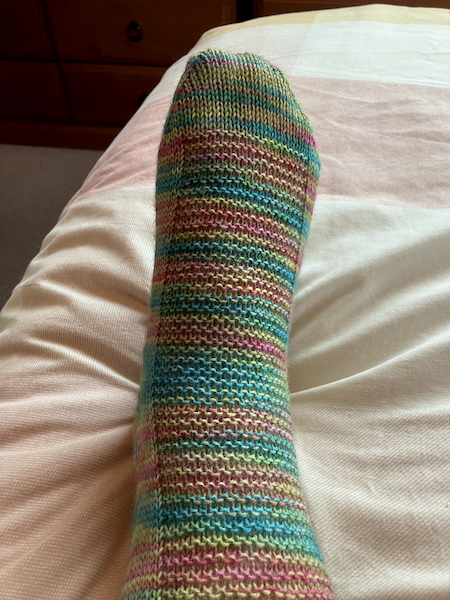
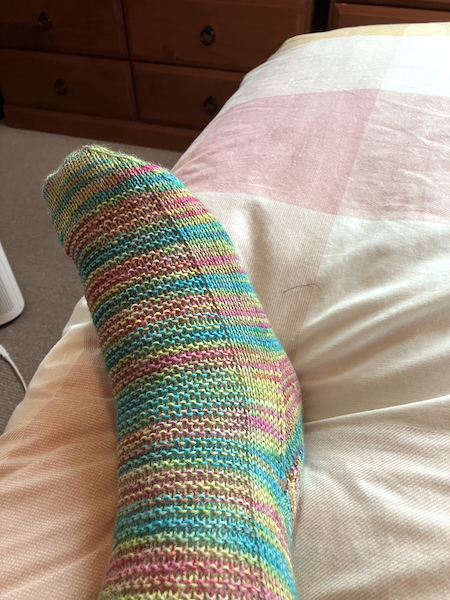
I haven't had a chance to wear these socks yet, but I'm sure they'll keep my feet toasty while wearing them in gumboots while gardening.
Have a wonderful day
Julie-Ann
Want to discuss my post? Feel free to chat with me on Instagram or Mastodon or Bluesky.
Side Garden Project - Planning and Building Raised Garden Beds
Hello friends,
After we had taken down the old aviary/berry cage, it was time to get to work turning this space into garden beds.
The first task was to weed the area, tidy up the fence line, and move two concrete pavers. Once I pulled out all the weeds and then tidied the fence line by putting old pieces of wood up against it for protection, hubby and I maneuvered the pavers into the space next door, where I have my worm farm located.

With all that done I ordered macrocarpa sleepers from our local garden centre for creating the new garden beds. The sleepers are 1.8 m long, which was the exact size we needed for that space.

The next step was to first put up some old trellises for our raspberry bushes, so we could train them along the fence line. We then create 90 cm wide beds using the macrocarpa sleepers, with 50 cm pathways in between for easy access to the garden beds. It was a lot of hard work considering there was a lot of river pebbles in the area. We transferred those river pebbles into the pathways between the garden beds when we were finished.


Once all the beds were in place, hubby did the hard work of digging over the garden beds and adding compost. The first bed closest to the garden shed was set aside for the strawberry plants I had put into pots in the glasshouse before the aviary was removed.


The next garden bed was set aside for my natural dyeing plants including Madder, Woad, St John's Wort, Tomentil, and Lemon Sorrel, which I had squeezed in another garden bed down the side of the house. While transferring the plants I was able to harvest some of the madder roots for natural dyeing. I have enough space leftover now to put more natural dyeing plants in the other half of the garden bed this spring.


Garden beds 3 and 4 are currently empty, and they still need to have compost added, before being prepared to a fine tilth for spring.


My plan is to grow Linen and Japanese indigo plants in bed 3: I have my own homegrown flax linen seeds in storage from last year, and I bought Japanese indigo seeds from Growing Textiles last autumn with the intention to grow my own indigo plants for natural dyeing, and also for indigo seed production.


In bed 4 I want to start my own breeding experiments with dahlias. I've wanted to do my own plant breeding for ages, and I now have the space to start this. I have dahlia seeds set aside from last year's plants to do this. I'm very excited about this project and can't wait to get started in spring.
Have a wonderful day
Julie-Ann
Want to discuss my post? Feel free to chat with me on Instagram or Mastodon or Bluesky.
New Peonies and a Rose Bush
Hello friends,
Recently I purchased some wish list plants for my garden, three peonies, and a recently released rose bush.
When NZ Bulbs released their peonies for the 2025 - 2026 season, I bought Duchesse de Nemours, Dr Alexander Fleming, and Sarah Bernhardt.
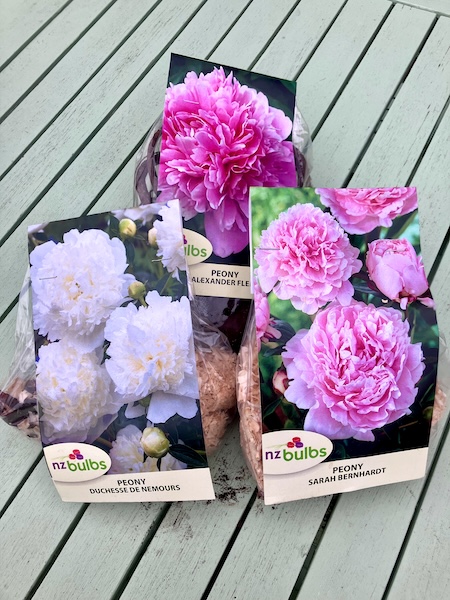
Duchesse de Nemours has ivory white double flowers and the sensational scent of Lily of the Valley.
Dr Alexander Fleming is a double, sweet smelling, pink peony with strong stems and a very good vase life. A very reliable peony variety for cutting.
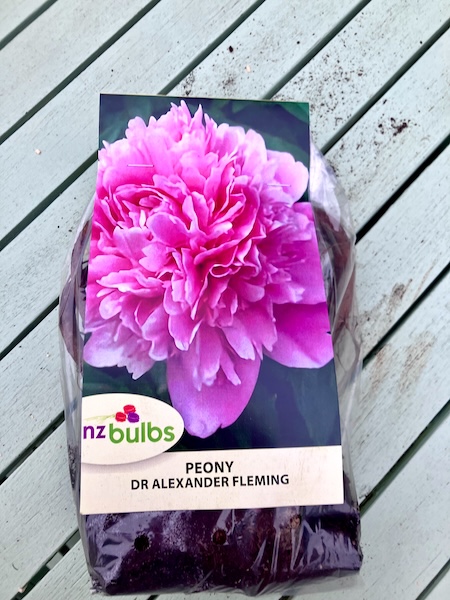
And finally Sarah Bernhardt has classic double blooms of deep pink petals, which are lighter toward the edges, and has occasional flecks of raspberry throughout.
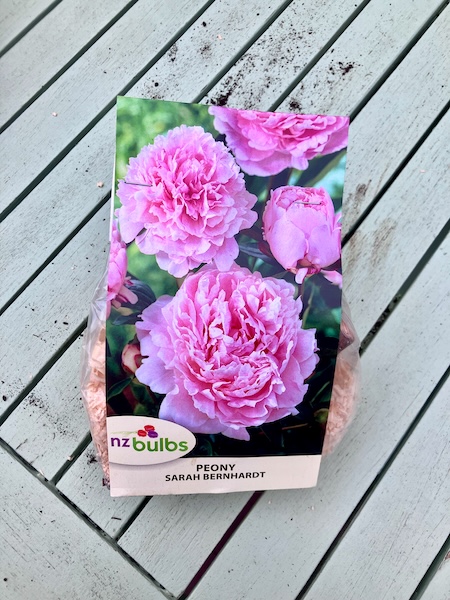
I also recently bought the floribunda rose bush 'Cuppa Tea' from our local garden centre. 'Cuppa Tea' was released for the first time in 2024 as a pre-order online, and it was sold out before it even reached garden centres that winter. I was disappointed to not get one when it first was released, and was pleased to find out our local garden centre had one available for me to buy this year.
'Cuppa Tea' floribunda rose has clusters of antique platinum blooms open into changing shades of warm lilac hinted with lavender pink. Bushy, healthy growing habit with
mid-green foliage. It was bred in New Zealand by Bob Matthews from his popular for picking creation 'Cappuccino'.
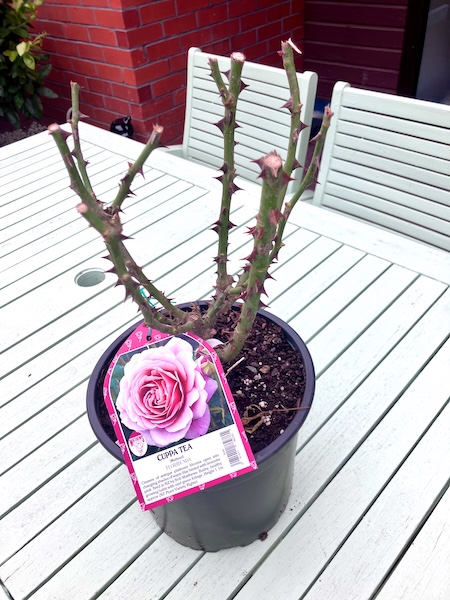
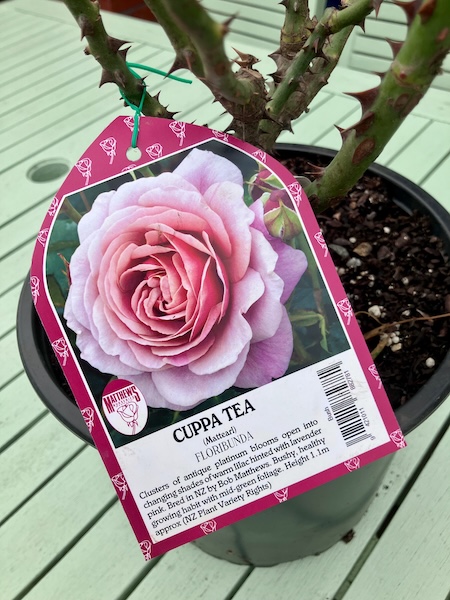
Now having acquired both peonies and a new rose bush, the problem was where to put them...but luckily I had an idea about that.
At the very front of garden alongside the driveway was a small section of garden which had two problematic plants, a rhododendron and an azalea. Routinely while growing, they impinged into the driveway, and make it too narrow for us to drive our car down the driveway without brushing up against them with our car. I'm also not fond of azaleas and rhododendrons, so I was more than happy to dig them out over a number of days.
It was a battle to remove them, but it was finally done. After removing both plants, I added compost to the soil and then dug it over.
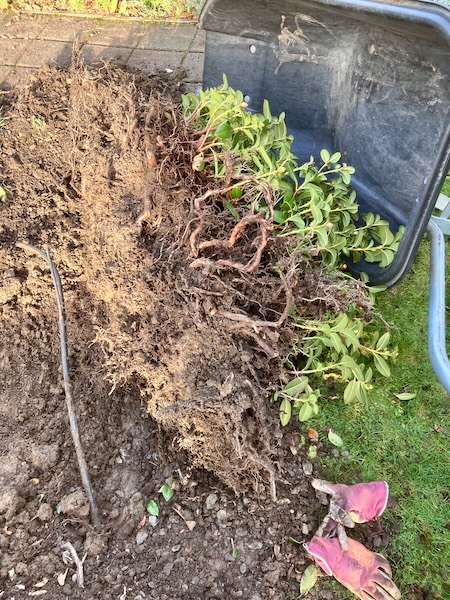
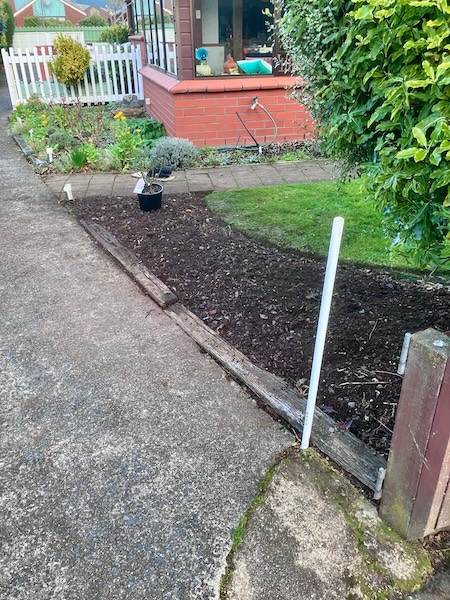
To that space I placed the 'Cuppa Tea' rose bush and the Sarah Bernhardt peony off center, so they stayed well far away from the driveway.
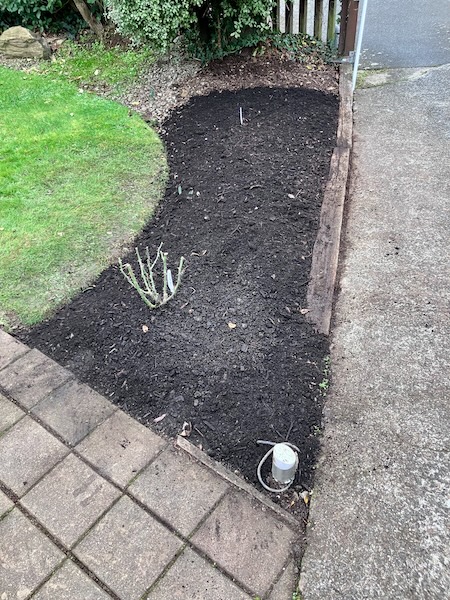
To even the garden bed out, I then dug back into the lawn by 10 cm, to increase the size of the front garden area. If I had to choose between more lawn, or more garden to work with, I'll always choose more gardening space.

After removing the turf, I then planted out the Duchesse de Nemours and Dr Alexander Fleming peonies into the new space in the front garden.
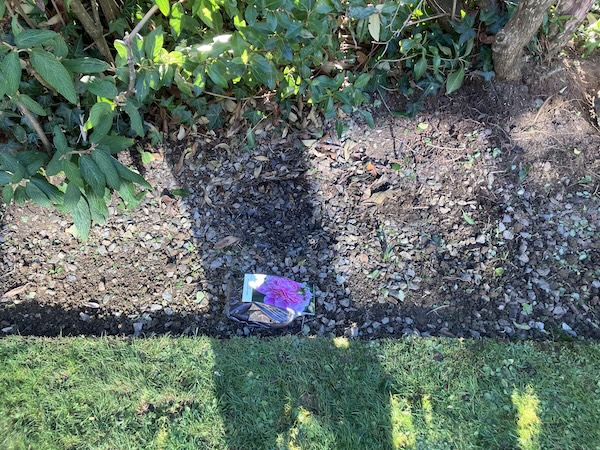


With that all done, there is nothing do do but wait for spring, for both the peonies and rose bush to start growing. There is also more space now for other plants to be planted into the front garden. And as for the space between the Cuppa Tea rose and the Sarah Bernhardt peony, I plan to plant two dahlias when they arrive in spring.
Have a wonderful day
Julie-Ann
Want to discuss my post? Feel free to chat with me on Instagram
or Mastodon or Bluesky.
Yeah Yeah Yeah Yarn's The Dark Woods Solstice Yarn Advent
Hello friends,
Back in May while on Instagram, I noticed that Yeah Yeah Yeah Yarn in Dunedin had up for pre-order a winter solstice yarn advent called 'The Dark Woods'. The advent theme up on Instagram was totally in the vibe that I love, with forests, woodland creatures like foxes and owls, and deep dark night colours. Twelve days of the advent had 20 gram mini skeins of 4 ply sock yarn, and the thirteenth day was one 100 gram skein of 4 ply sock yarn.
So I excitedly handed over my money, and patiently waited until the yarn advent arrived at the end of June. With the yarn advent all packaged up in a box, I then waited impatiently for the 1st of July start date, and opened one advent yarn package each day for the next 13 days.
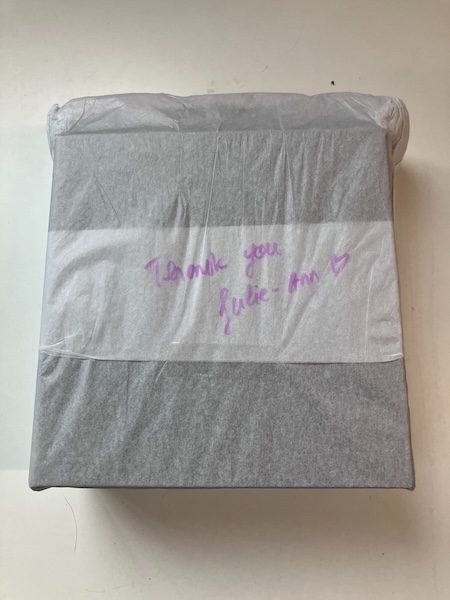
And I was so pleased with the yarn advent colourways as I opened them day by day. The first day started with a beautiful orange and brown fox colourway, and as the days went on, the colours got moodier and darker. By the time the advent got to the last couple of days daylight began to appear in The Dark Woods mini skeins, and the final 100 gram skein was a beautiful soft dawn.
I thought I'd share with you all the colours in 'The Dark Woods' day by day, with the top left being day 1, and the bottom right being day 13.
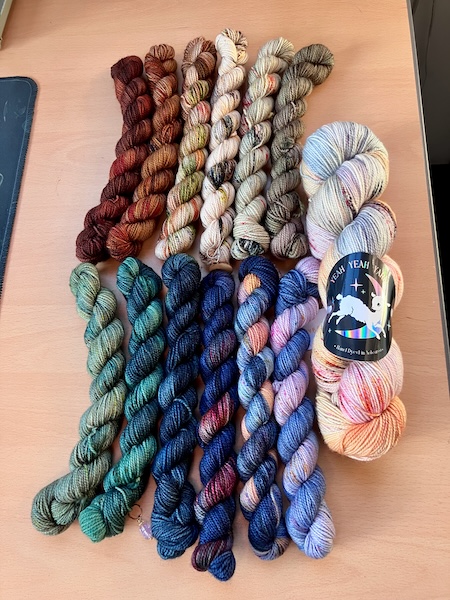
The first 6 days mini skeins included a really lovely gradient of brown toned colours.
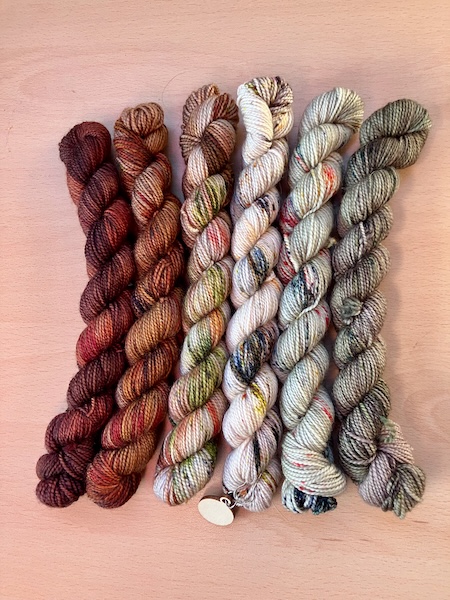
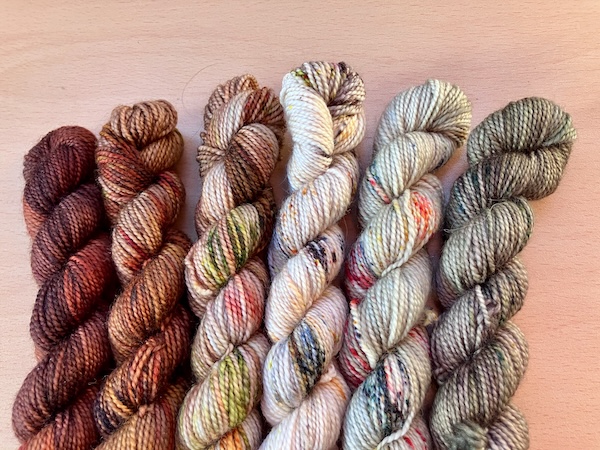
And the next 6 day skeins really worked lovely together as well with deep greens merging into dark blue nights, and then the approaching dawn.
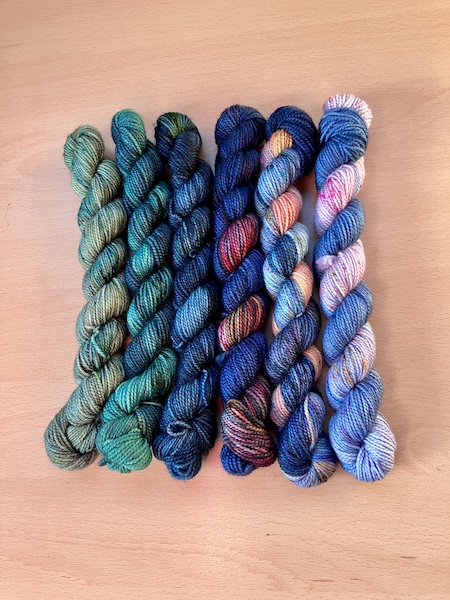
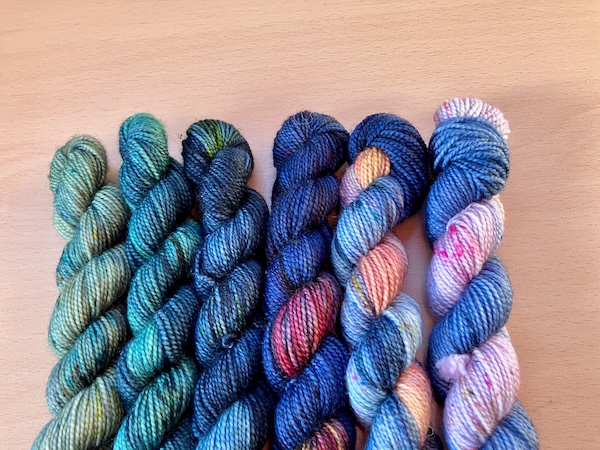
And finally, the day 13 100 gram skein of Day Break sock weight yarn was just stunning in soft shades of blues, apricots, and pinks.
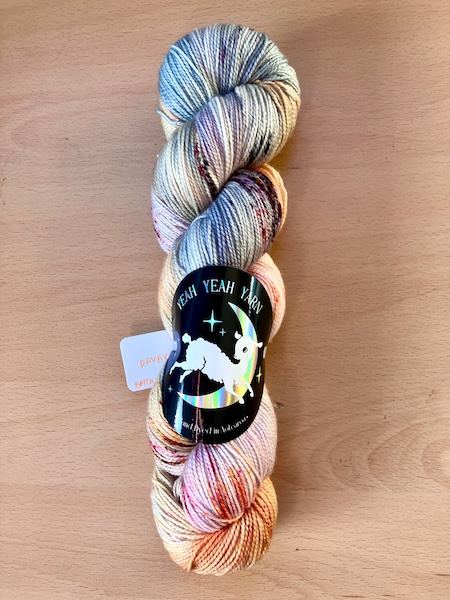
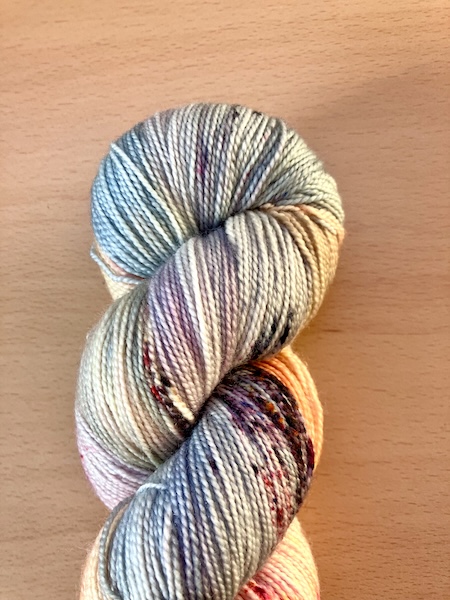
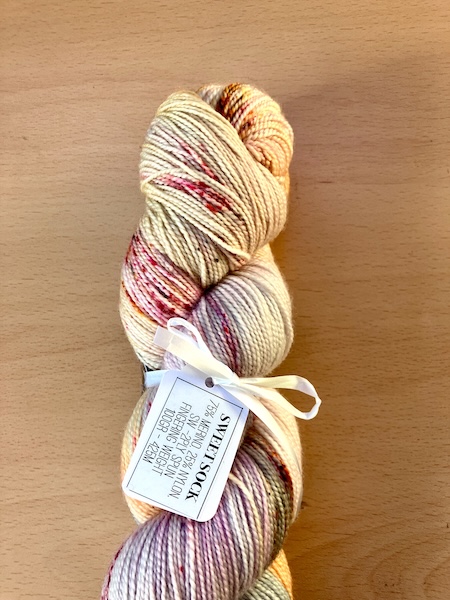
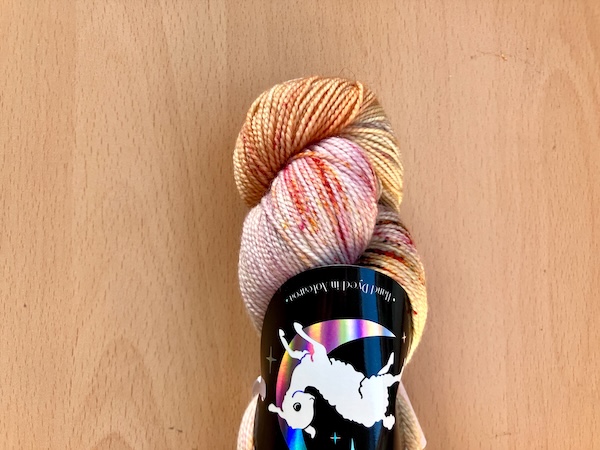
I'm really pleased with the yarn advent, and thought it was well worth the money I spent. I've always wanted to do a yarn advent, but the price of the 25 day advents were too expensive for me to justify. But this 13 day yarn advent was enough to be pleased to do it just once. The colourways were just what I hoped for, and I'm especially happy with the day 13 100 gram skein of yarn.
I now need to knit up the yarn advent into a wonderful project. I would like to use all the colours in one project, but it's taking me a while to find a project that is truly worth all the beautiful yarn. I have many project tabs open on Ravelry, but for now I'm undecided...
Have a wonderful day
Julie-Ann
Want to discuss my post? Feel free to chat with me on Instagram or Mastodon or Bluesky.




